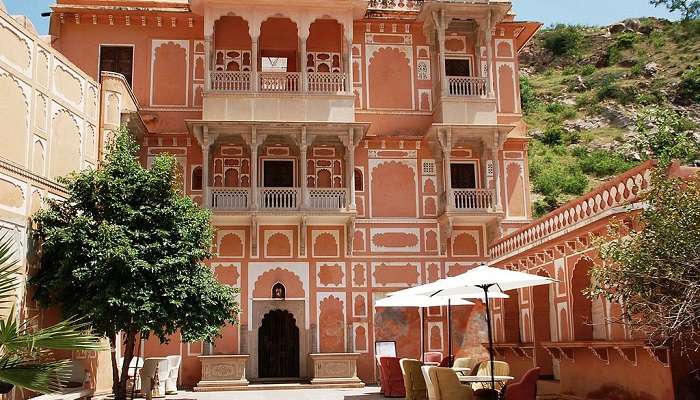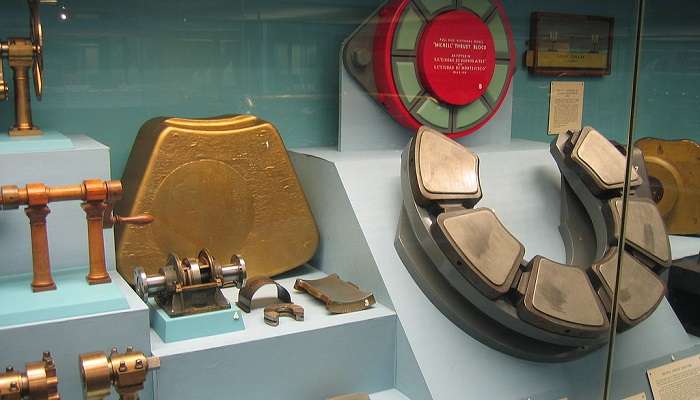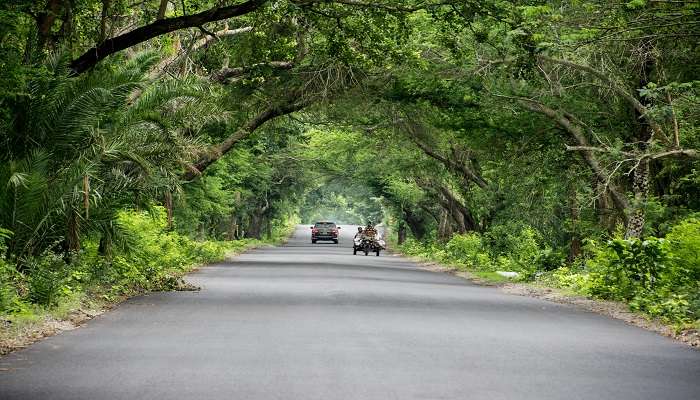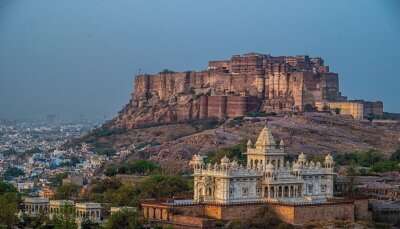Anokhi Museum of Hand Printing Is A Creative World of Textile Printing

Anokhi Museum of Hand Printing will leave you stunned with the exclusive display of Block Painting garments and it is a befitting testimonial to the sociocultural revolution of today’s Anokhi Readymade Clothing. The collection presented in this museum comprises some of the earliest and the most significant works of Rajasthani art. The Anokhi Museum is an officially certified UNESCO site offering over a hundred garments. Its main purpose is to propagate and make the traditional folk art of Rajasthan proud. In all, the Anokhi Museum is a must-visit for every enthusiast who wants to learn more about the history and dress code of the Rajasthan Province.
History Of Anokhi Museum Of Hand Printings

The establishment of the Anokhi Museum of Hand Printing was a dream and vision of Rachel Bracken Singh and her husband, Pritam Singh. They founded it in 2002 to protect and present one of the most ancient forms of traditional Rajasthani art, hand-block printing, to the world. Renowned architects Nimish Patel and Parul Zaveri began restoring the building in 1989, and it took three years to complete the restoration work and bring the mansion back to its former glory. In the restoration process, Rachel always ensured that the building’s features were preserved in arts and cultural heritage with an emphasis on regional craftsmanship and materials. it was as a part of her mission to collaborate with the local artists and craft persons to continue the legacy of this art form as a proud cultural symbol of Rajasthan.
It is said that the mansion was once used as a rest house for palanquin bearers when royalty ruled the region. When the Anokhi Museum of Hand Printing first opened its doors in 2007, it featured an incredible exhibition called ‘Print Progress – Innovation and Revival 1970-2005’. The talented Pramod Kumar and Emma Ronald team worked closely with Rachel to curate this amazing show. Now, Suki Skidmore carries on their work as the museum’s curator and visiting consultant. She has been a part of Rachel’s team since 2007. Overall, the Anokhi Museum of Hand Printing is a true labour of love for Rachel and her team. They have dedicated themselves to preserving the beautiful cultural heritage of Rajasthan, and it shows in every detail of the museum. It’s quite inspiring to see their hard work and commitment pay off in such a meaningful way.
Must Read: Museums In Rajasthan
Anokhi Museum And Its Timings

The Anokhi Museum is an incredible place for anyone interested in art, crafts, history, and cultural heritage. It’s a must-visit for anyone who appreciates the finer things in life. The museum’s galleries showcase the richness and complexity of traditional Indian block printing with a vast collection of hand-printed fabrics, including rare and contemporary pieces. You’ll find examples of traditional and Western garments, all beautifully crafted using this unique technique. This allows the museum to explore ways to incorporate these art forms into modern Western clothing and contemporary art forms.
Furthermore, the museum publishes books celebrating hand-printed fabrics and highlighting the talented artisans who continue practising these traditional skills. This raises awareness of their work and provides employment opportunities for people who might otherwise struggle to make a living from their craft. In summary, the Anokhi Museum is a wonderful place that brings together art, culture, and history in an educational and inspiring way. It’s a must-visit for anyone interested in the rich cultural heritage of India.
Timings:
You’re welcome to drop by this fantastic museum anytime from Tuesday through Saturday between 10:30 in the morning and 5 in the evening and on Sundays from 11 to 4:30 in the afternoon.
Suggested Read: Jaipur Travel Tips
Entry Fees And Location Of The Museum

To enter the museum, you’ll need to pay a small entry fee: 80 rupees for adults and 25 rupees for kids. Keep in mind, though, that photography with your camera or phone to snap pictures or shoot videos is not usually allowed. If you want to do that, you’ll have to pay an extra 100 rupees for a special permit.
The Anokhi Museum of Hand Printing is about 13 km from the city centre, near Sagard Road and Kheri Gate, and about a kilometre from the Amber Palace.
How To Reach Anokhi Museum Of Hand Printing

The Anokhi Museum of Hand Printing is located near Jaipur, the most popular town in Rajasthan. It’s a beautiful Haveli (an Indian mansion) located near Kheri Gate, Amber, about 15 kilometres from Jaipur.
Jaipur has excellent connectivity to major cities across the country, with the Jaipur railway station and the Sanganer airport (also known as the Jaipur airport) serving the area. The best way to reach the museum is to rent a taxi or cab in Jaipur and visit the Anokhi Haveli.
Further Read: Best Places To Visit Near Jaipur
Do you have all the information? Are you ready to dive into Jaipur’s rich cultural scene? So plan a trip to Rajasthan, and don’t forget to add the Anokhi Museum of Hand Printing to your itinerary for an unforgettable experience in this fantastic city! You’ll find so much to discover and explore and make memories that will last a lifetime in the heart of Rajasthan.
For our editorial codes of conduct and copyright disclaimer, please click here.
Cover Image Credit: Ketayun, Katz for wikimedia commons
Frequently Asked Questions About Anokhi Museum Of Hand Printings
Has Anokhi museum got any provision for meals or somewhere to buy food from?
Indeed, the Kiosk sells hot and cold beverages only in the museum forecourt without any other products of its operation. It is a more quiet and relaxing area after the viewing of spectacular sights.
Is there a Anokhi shop at the museum?
Yes, they also have a small collection of exclusive textiles and other craft, and publications on the exhibits or restricted. Printed fabrics depend with the topic of focus as a number of unique limited edition fabrics prints, mats, carpets as well as traditional block print.
Is there any sessions / workshops / lecture where audience is able to engage / participate?
Sometimes the museum offers opportunities to participate in such a presentation where people can see how block printing is done, and even try it on their own with the help of slices of potatoes.
Are guided tours available?
Indeed, the museum provides tour services where visitors are availed with tour guides and special details about the displayed items and the whole process of hand block printing. One advantage of visiting a new place is that you can get a guided tour as a result, you will be able to hear from an expert and you will be given a detailed description of what you are seeing.
How many hours or days will it take to visit the museum?
Most visitors take approximately 1-2 hours to complete the visitor route and other interactive activities; however, if you are planning to take a guided tour, engage in a workshop, or explore the interactive features of the exhibit and all of the gift shops, you may need more time.
People Also Read:
Bloemfontein Museums Sudha Cars Museum Queensland Museums

Innovative Content Writer Focused on Producing High quality, Original Content that drives traffic and engages readers. Experienced in Content strategy and analytics to measure content performance using tools such as SQL, Power BI, Excel.











